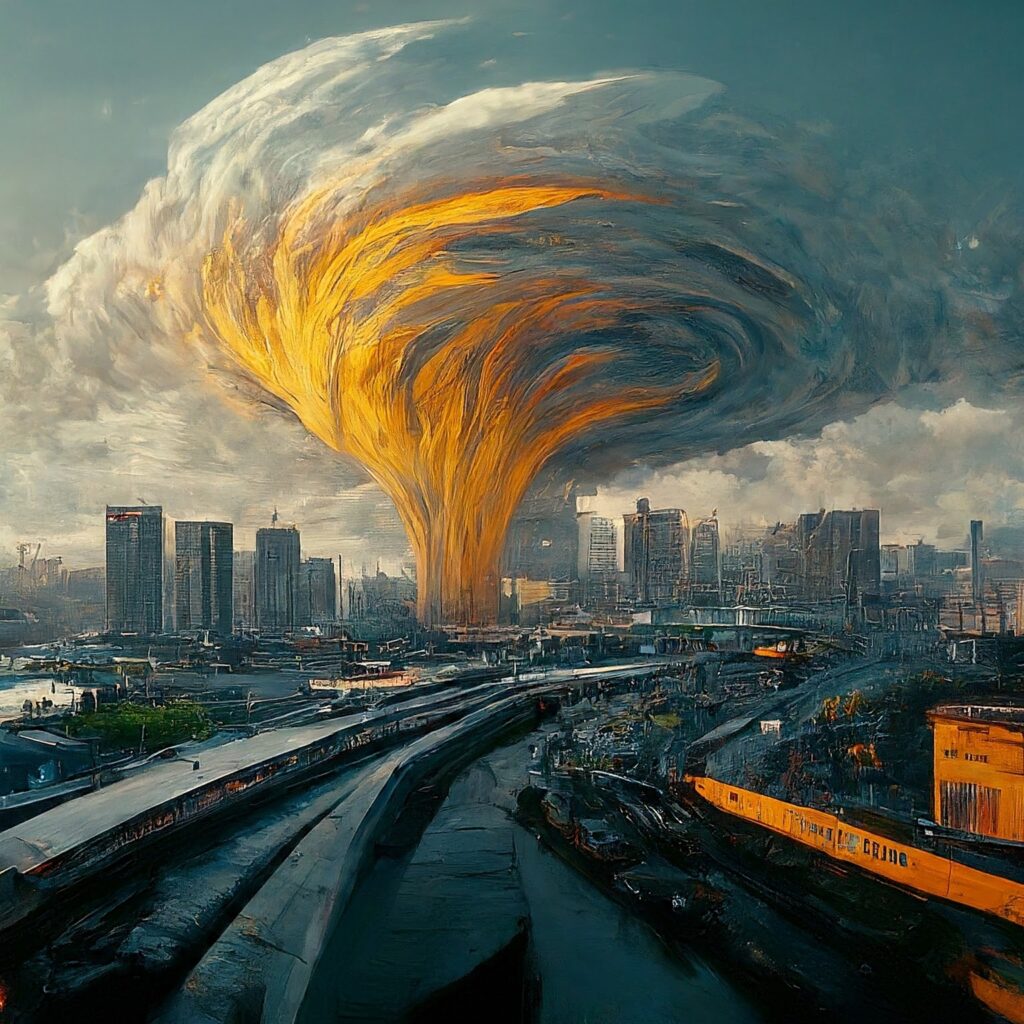Urban Climate is the microclimate conditions found within urban areas as a result of human activities and the built environment. It has various factors such as temperature, humidity, precipitation, wind patterns, air quality, and the urban heat island effect.
As the population continues to grow and urbanize, cities are becoming increasingly important drivers of global climate change. The way that cities are designed and built, the energy sources they rely on, and the behavior of the people who live in them all have a significant impact on the urban climate.

Heat Islands in Urban Climate
One of the most well-known effects of urbanization on the climate is the urban heat island (UHI) effect. Cities are typically much warmer than the surrounding rural areas due to the large amounts of concrete, asphalt, and other man-made materials that absorb and retain heat. This increased heat can have serious consequences for the health and well-being of city residents, as well as for energy use and air quality.
"The UHI effect is primarily caused by the replacement of natural vegetation with heat-absorbing surfaces like asphalt and concrete"
To mitigate the UHI effect, cities can adopt a variety of strategies, including planting trees and green roofs, using reflective building materials, and creating green spaces. These strategies can help to reduce the amount of heat absorbed by the urban environment, and to create cooler and more livable cities.
Table of Contents
Air Quality
Urban areas often experience poorer air quality compared to rural areas due to emissions from vehicles, industrial activities, and other sources of pollution.
Factors such as traffic congestion, industrial emissions, construction activities, and the presence of pollutants trapped within the urban canopy layer contribute to reduced air quality, which can have adverse effects on public health and the environment.
Urbanization and Climate Change
Urbanization alters local climate patterns and can exacerbate the impacts of global climate change. As cities expand, they modify natural landscapes, disrupt hydrological cycles, and contribute to the loss of vegetation and biodiversity, leading to changes in local climate conditions. Urban areas are also vulnerable to climate change impacts such as extreme weather events, sea-level rise, and heatwaves, which can further exacerbate existing urban climate challenges.
Green Energy and Transportation
Another way that cities can impact the climate is through the energy sources they rely on and the transportation systems they use. By transitioning to renewable energy sources such as wind, solar, and geothermal, and by promoting sustainable transportation options like walking, biking, and public transportation, cities can reduce their carbon emissions and help to mitigate the effects of climate change.
Adaptation Strategies for Urban Climate
In addition to reducing emissions, cities must also be prepared to adapt to the impacts of global climate change. This might include investing in infrastructure to protect against rising sea levels, improving building codes to better withstand extreme weather events, or planning for more efficient use of water resources in the face of drought.
Conclusion
In conclusion, the urban climate is a critical area of study for geographers and other environmental scientists. By understanding the impact of cities on the environment, and by developing and implementing strategies to reduce emissions and adapt to climate change, we can help to ensure a more sustainable and livable future for the world’s growing urban populations. Whether we live in cities or not, we all have a stake in the health and well-being of the urban environment, and it is up to each and every one of us to do our part to protect it.
Read: Geography